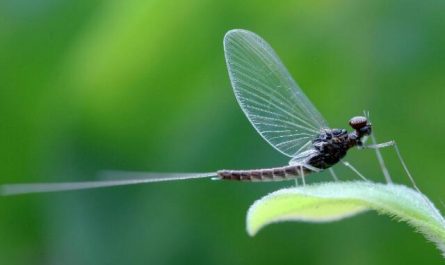Reasons for the migration of butterflies
Some entomologists believe that the migration of insects is to escape from bad environmental conditions and is an instinctive behavior for species survival. It is related to genetics and environmental conditions. They believe that migration is a direct response of insects to the adverse environmental conditions at the time, such as lack of food, drought, overreproduction, overcrowding, and so on. For example, when the cabbage butterfly emerges as an adult, if the parasitic plants cannot provide it with a better food source, it will migrate to find a delicious taste. On the contrary, if its parasitic plants can meet its needs, it will not migrate. In addition, changes in certain environmental conditions affect the individual development of insects, causing them to develop into migratory adults. They found that differences in photoperiod, temperature, population density, and food conditions will cause the adults to have obvious differentiation in physiology and flight ability. This makes the migratory butterfly obtain the possibility of physiological conditions.
It turns out that these migratory butterflies are just like migratory birds. They pursue a warm climate suitable for their lives. Go south in winter; go north in summer. Canadian zoologist Urquhart has done long-term research on the migration of American milkweed butterfly, looking for traces, and finally found a concentrated settlement of this butterfly over the winter on the peaks of the Madre Mountains in Mexico. Millions of butterflies live here every year. In summer, they flew to the United States and Canada. This kind of butterfly is not only larger in body, but also has a particularly gorgeous pattern on its body. It is worthy of being the king of butterflies. People found that this kind of butterfly is very organized when it migrates. It flies 50 kilometers a day. It rises at dawn and rests in the evening. Although it is hit by a storm, some are left behind and some are killed, but they always try their best to converge. Its ambition is to maintain a strong lineup, fly over the mountains, over the sea, over the desert, and fly to their destinations. During the flight, the female butterfly is protected. Many male butterflies surround the female butterfly in the middle, and the male butterfly bears the brunt of the bad weather. Therefore, after completing a migration, the male butterfly always has half casualties.
Of course, not all kinds of butterflies have this feat. According to the current findings, only a few species such as white butterfly, nymphalidae, milkweed butterfly and tengu butterfly have the habit of migrating.
Use of butterfly wings
Butterfly wings are like two wings of an airplane, allowing the butterfly to use the airflow to fly forward; the colorful patterns on the butterfly wings are amazing. However, their colorful wings are not just for feasting people’s eyes. The colorful colors are used to hide, disguise and attract spouses. The new book “100 Kinds of Butterflies” written by Harold Feinstein shows people very beautiful pictures of butterflies and moths.
Beautiful wings
This South American species (pictured on the right) is called “Eighty-eight butterfly”, distributed in South America, there are about 40 species. Its characteristic is the striking “88” on the hind wings. The markings of many insects are fickle, and sometimes some amazing patterns appear.
Defend against the enemy
Owl butterflies are so named because of the huge eye-like markings on their wings. Its function is obvious-imitating the staring owl face to frighten nearby predators. In fact, biologists have yet to confirm whether these eye markings are meant to scare away predators. It may also be used as a bait for predators to attack their wings instead of their vulnerable bodies.
Gorgeous sunset
The origin is the “sunset moth” of Madagascar. The brilliant colors on their wings are also used to warn predators of their toxicity. Both butterflies and moths belong to the Lepidoptera order, and they have a large number of scales on their wings. Their wings are made up of tiny spots-providing insect protection from moisture and forming elegant colorful patterns. Some colors are caused by the pigment of the scales, but the rainbow-like tones are caused by the scattering of tiny scales.
Blue phantom
Blue morpho (blue morpho) wings glow with light blue fluorescence. Their cobalt blue color does not come from pigments, but the thousands of translucent scales on their wings. These scales can filter out the blue light in visible light and make it radiate from the wings. It can quickly flap its wings to produce a flash when the natural enemy approaches, and then scare the natural enemy away. This tropical butterfly does not eat nectar, but draws juice from rotten fruits. Its favorites are mango juice, kiwi juice and lychee juice. The Goddess of Light Butterfly is the most beautiful butterfly in the world.
Invisibility
This glasswing butterfly has a unique dreamy color. The tissue between its wing veins is transparent and looks like glass, hence the name. Like other transparent winged butterflies and moths, its wing film is not colored or covered with scales, which makes them transparent. This transparency helps the transparent winged butterfly native to the tropical rain forests of South America to easily escape the sight of predators. Although transparent butterfly is very rare to people, in fact, it is not a large number in its native place and is not listed as a rare species.
Leopard lure
Many butterflies try to hide to avoid attention. But there is one exception, that is, insects want to get the attention of the opposite sex during the mating season. Male leopard lacewing butterflies like to show off their gorgeous orange, which may be sending a signal to females that such a conspicuous target is still alive, and he must have good genes. Leopard nymphs are male and female, which means that females are not very conspicuous. Because they don’t need to impress the mating partner, the color of female wings is brown, black, and white.






